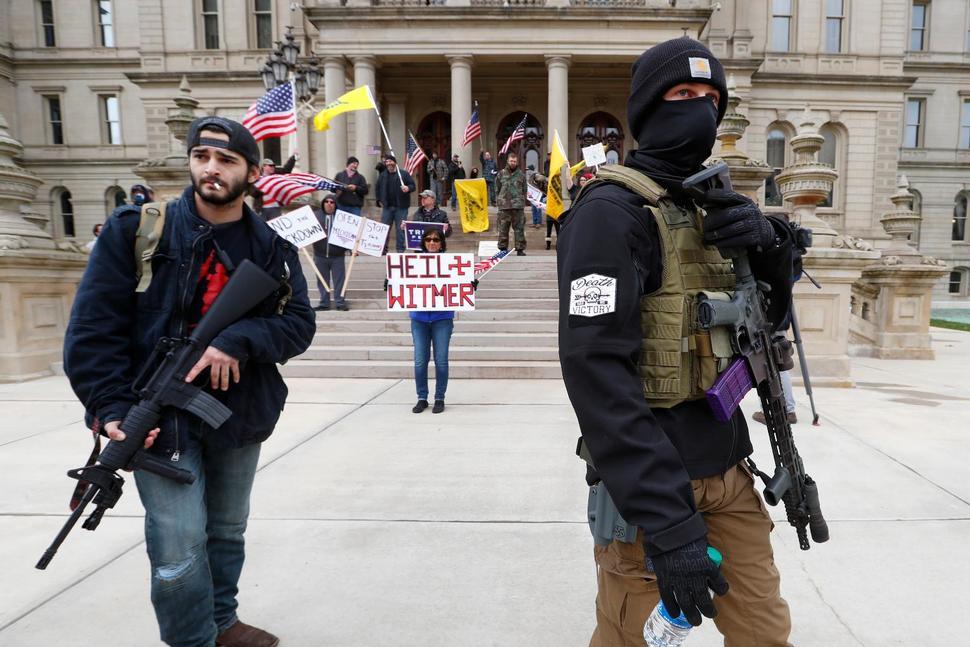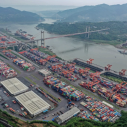Coronavirus and International Populism: Ideological and Generational Divides
archive


Normandy American Cemetery and Memorial in Colleville-sur-Mer, Normandy, France.
Coronavirus and International Populism: Ideological and Generational Divides
The intersection of the global coronavirus pandemic and the rise of populist nationalism highlights the great political schism of our generation. As trust in politics and politicians continues its secular decline,1 the pandemic sharpens the divisions that politicians have created or are taking advantage of in their pursuit of power and influence.2 In the United States, the effects of the virus are felt most intensely in dense urban areas and among the elderly, particularly those with preexisting conditions. The geographic viral divide parallels almost exactly the political divides the United States has been struggling with since the election of Donald Trump in 2016. The generational divide cuts in the opposite direction. Because the effects of the virus do not line up consistently with political divisions, the effect is likely to be greater not lesser political conflict during the coming elections. Contrary to what Vittorio Bufacchi argues and regardless of which ideological camp ends up stronger, populists stand to gain from the crisis as they parlay fear into votes.3
This same dynamic is playing out across Europe as well. Right wing populist leaders in the democratic community have consistently downplayed the risks associated with the disease. Institutionally-minded leaders in the globalist camp argue for continued shutdowns and portray the pandemic threat as an illustration of the need for greater international integration and greater vigilance against the transnational threat of global warming.4 Nationalists see the virus as a threat to their tenuous hold on power; progressives see in the virus their best opportunity to impose their vision for the future. In the early days of the pandemic, expert voices amplified by the news media presented a truly catastrophic threat to humanity. Populist political leaders, as they often do, were dismissive of the experts’ analyses and downplayed the threat. While it is too soon to say with certainty, with ever greater numbers of studies coming in, as is so often the case the truth lies somewhere between.
In the US, on average, about 3 million people die each year. If 100,000 die from coronavirus this year, it will be a severe blow but nothing on the scale of what was initially feared. Experts claims notwithstanding, comparing deaths per million in the EU and the United States, there seems little difference between the US with its employer-based health system, and the EU’s standard of state-sponsored national health systems.5 For the young, and healthy, COVID-19 is typically a dangerous but not life altering disease.6 The economic and social effects are more worrisome than the disease itself. For the old and ill of health, the virus poses great risk, more than anything we have seen in decades, particularly so for those living in cities or assisted living facilities.
As country after country succeeds in slowing the disease’s progression, the social and economic tradeoffs have been stark. The future political effects are far less clear. While the numbers of those infected with the novel coronavirus continue to rise, great damage is being done to our communities and economic lives with younger generations bearing the costs far more than their more senior counterparts. This may dramatically increase the appeal of national populism for these prospective voters.7 The impact of these costs are certain to shape politics well past this fall’s elections. The challenge for national populist parties seems clear. They need to bring younger more progressively-minded voters to their camp. This suggests strong efforts to re-open economies as much and as soon as possible combined with unprecedented increases in government spending and lending. The cost will be to the oldest, sickest voters in the populist camp. Complicating this calculation is the fact that the young tend not to vote, while the older generations tend to vote more than any other group.8
Contrary to President Trump’s and Prime Minster Johnson’s claims, this is not a war. It is easy to understand why they use this metaphor. Talk of war feeds into the public’s fears and may help mobilize support for government policies. In the long run, poor analogies are harmful because they fuel mistrust in government and its associated institutions. This distrust is of course one reason why fear-mongering populists so often reach for the analogy of war.9 Nevertheless, in actual war the combatants do not reside in nursing homes, do not suffer from pre-existing conditions, and are not obese. They are the youngest and fittest among the country’s productive adults. In a war the stakes are considered so high that a country’s leaders judge it worthwhile to sacrifice young productive lives for the greater good.
...great damage is being done to our communities and economic lives with younger generations bearing the costs far more than their more senior counterparts. This may dramatically increase the appeal of national populism for these prospective voters.
To this point, it is unclear to what greater good we are sacrificing 25 million jobs and the American way of life. While there are competing notions of what “the American Way of Life” stands for, some good, some ill, the competing visions of America lie at the foundation of populists’ appeal.10 For progressive globalists residing in urban areas the good to be advanced lies in the internationalist’s democratic vision. For right-wing populists the answer is to shift the costs to those whose health is most at risk to best protect the employment prospects of the economically productive generations, particularly those in the suburbs and manufacturing areas. Right or wrong, what matters for the populist politician is what people feel, and populist leaders can use their framing of the ‘American way of life’ to fuel support for populist policies. Trump has been and will continue doing that, and it may be working.
With a handful of notable exceptions, this struggle between national populists and globalists is playing out without an explicit conversation about the tradeoffs. In stark terms it can be stated in this way: The loss of any single life is a tragedy. So too is the loss of a career, a home, a business. Some leaders do understand the tradeoff. As reported in the Washington Post, Rep. Trey Hollingsworth (R-Ind.), argued recently that “(i)n the choice between the loss of our way of life as Americans and the loss of life, of American lives, we have to always choose the latter.” For those wishing to change the trajectory of the way of life that populists envision, protection of all lives at the expanse of the economy is the best path forward.
Historically, Americans have chosen their independence and freedoms over hiding in their homes when facing that tradeoff. One feature of American exceptionalism has been the willingness, ultimately, to prioritize the broader American way of life over individual lives. In World War II America’s “greatest generation” sacrificed over 400,000 lives to protect the country’s way of life. The US faced no clear and present danger to its survival from either Germany or Japan. It did face a threat to the American dream of freedom, autonomy, and prosperity.11 Today, progressives are urging the sacrifice of that dream to protect the lives of a generation whose time has largely passed.

Protesters carry rifles at the steps of the State Capitol building in Lansing, Michigan on April 15, 2020, demonstrating against Governor Gretchen Whitmer's orders to keep people at home and businesses locked during the COVID-19 outbreak. (AP Photo/Paul Sancya)
Lt. Governor Dan Patrick of Texas was ridiculed for stating that his generation—those in their seventies—should be prepared to take the risks necessary to protect the careers, homes, and businesses of generations younger than themselves.12 Rather than dismissing voices such as his, we need to have the conversation. The right question today is not, how can we reduce the risk of infection as much as humanly possible? The better question is how many people would choose a one in 1,000 or a one in 100 chance of death versus losing their job, their home, their business?
We make our choices, we take our chances. The progressive-globalists’ choice will be to maintain strict social distancing policies until the risk of any excess death is past. They will try to do so in part to advance their anti-populist political vision. The national populist path will be to restart their economies as soon as possible. When Winston Churchill, one of the most renowned British nationalists, chose to fight in what became World War II, the easy thing to do would have been to bargain with Hitler, as many of his colleagues advised. He chose to fight, risking British lives and his party’s future. The Coronavirus pandemic presents a similar divide between ideological visions, and generational divides may prove the deciding factor in this epic debate.
1. Hetherington, Marc J. Why trust matters: Declining political trust and the demise of American liberalism. Princeton University Press, 2005.
2. Mounk, Yascha. The people vs. democracy: Why our freedom is in danger and how to save it. Harvard University Press, 2018.
3. Inglehart, Ronald F., and Pippa Norris. "Trump, Brexit, and the rise of populism: Economic have-nots and cultural backlash." (2016). HKS Working Paper No. RWP16-026 Posted: 6 Aug 2016
4. Daszak, Peter, Kevin J. Olival, and Hongying Li. "A strategy to prevent future pandemics similar to the 2019-nCoV outbreak." (2020). See also, Hudecheck, Michael, et al. "How companies can respond to the Coronavirus." MIT Sloan Management Review (2020).
5. https://ourworldindata.org/grapher/daily-covid-deaths-per-million-7-day-average?country=ITA+ESP+USA+GBR+KOR+CAN+FRA+BEL+DNK+DEU+SWE+CHE+NLD
6. https://www.cdc.gov/nchs/nvss/vsrr/COVID19/
7. Autor, David, et al. "Importing political polarization? The electoral consequences of rising trade exposure." NBER (2016).
8. Wolfinger, Raymond and Steven J. Rosenstone. Who Votes? 1980. Yale University Press.
9. DH Noon. 2004. Operation enduring analogy: World War II, the war on terror, and the uses of historical memory. Rhetoric & Public Affairs, 2004
10. Lipset, Seymour Martin. American exceptionalism: A double-edged sword. WW Norton & Company, 1996. See also, Cullen, Jim. The American dream: A short history of an idea that shaped a nation. Oxford University Press, USA, 2004.
11. Brokaw, Tom. The Greatest Generation. Random House, 2000.
12. Mann Fernandez and David Montgomery. Texas Tries to Balance Local Control with the Threat of a Pandemic. New York Times. March 24, 2020. https://nyti.ms/3bk1oqn



